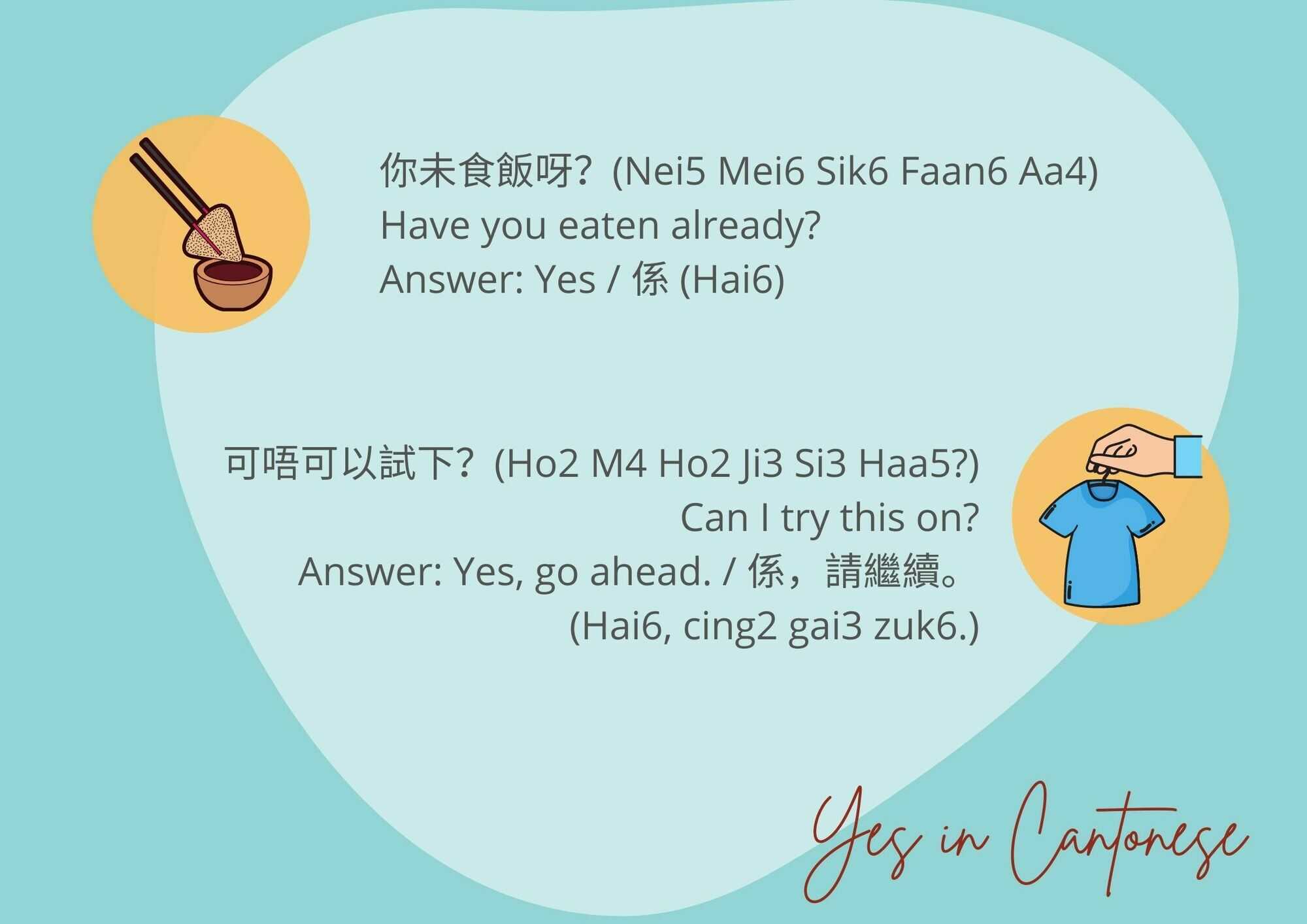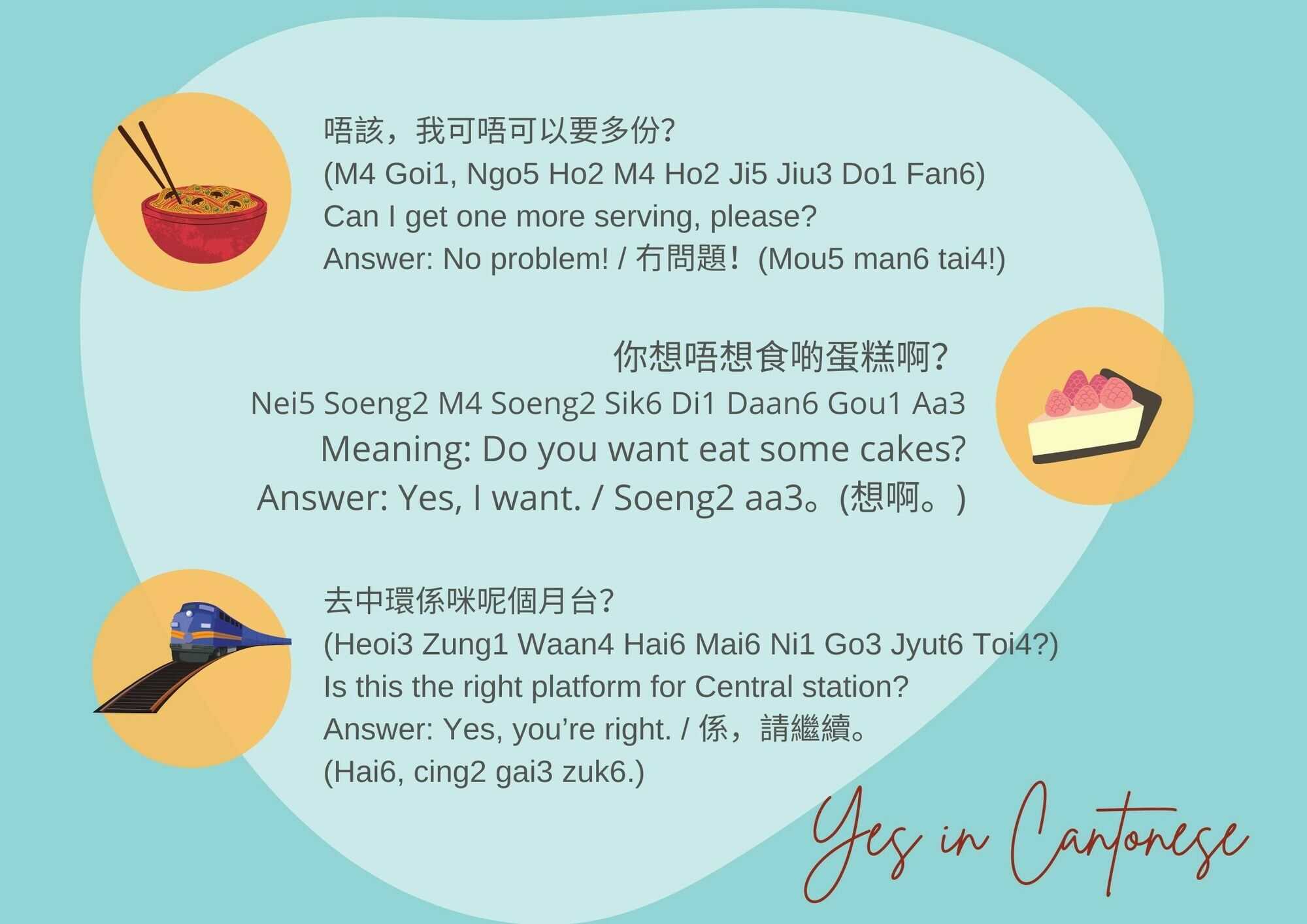If you go to Hong Kong, you will probably be asked questions like “Do you speak English?” / “你識講英文嗎?” (nei5 sik1 gong2 jing1 man6 maa3). It is easy to just nod to say Yes but when you are in Hong Kong, try learning how to say Yes in Cantonese 係 (hai6). Surely, you will be needing this to survive your entire trip.
The word Yes is part of daily conversations. Although it is only a three-letter word, it is undoubtedly one of the most important especially when you travel to different palaces. Saying yes is commonly used to agree on something but in a deeper context, saying yes means making the most of every opportunity. People who usually say yes tend to take their chances to reach their limits and step out of their comfort zone. One of the perfect examples of getting out of your comfort zone is talking to the locals when you travel abroad. In this blog, you will learn how to say Yes 係 (hai6) in Cantonese.
Saying Yes In Cantonese V.S Saying Yes In Mandarin

The Chinese language is undeniably one of the most known languages because of the influences of Chinese people all over the world. One thing that you should know is that the Chinese language has many dialects. Two of those dialects are Cantonese and Mandarin. Mandarin is the simplified version of the Chinese language and it is widely spoken in mainland China and other Chinatowns while Cantonese is spoken in Guangdong Province, China, Hong Kong, and Macau. There are lots of differences between Mandarin and Cantonese but this will be enough for starters.
If you are wondering which should you learn, the answer will depend on which country you are going to. To say Yes in Mandarin, use 是的 (shì de). This literally means Yes in English. To say Yes in Cantonese use 係 (hai6). Remember that in the Chinese language, pronunciation is important so make sure to pronounce it right.
3 Ways To Say Yes In Cantonese
Have you ever been to Hong Kong? / 你有冇去過香港?(nei5 jau5 mou5 heoi3 gwo3 hoeng1 gong2?). If you would be given a chance to Hong Kong, saying no / 唔係 (m4 hai6) to a lot of things will be difficult. If you like to enjoy your trip, make sure to learn Cantonese words and phrases like saying yes. Saying Yes in Cantonese may come in different forms. It can be used to answer basic yes or no questions that will make your whole trip easier. Check out the following ways of saying yes in Cantonese:
1. 係 (Hai6)

This is the common way of saying yes in Cantonese. It can be used both in written and spoken communication. This literally means Yes in English so you can use it to answer different questions that are answerable by yes or no. Remember, you can only use 係 (hai6) if the question used 係 (hai6) as its predicate.
2. 係呀,你講得啱。(Hai6 Aa3, Nei5 Gong2 Dak1 Aam1.)

If you want to agree with an idea, you can use 係呀,你講得啱。(Hai6 aa3, nei5 gong2 dak1 aam1.). This means “Yes, you’re right.” in English. It is a nice way to show respect for someone’s idea and opinion.
3. 係,請繼續。(Hai6, Cing2 Gai3 Zuk6.)

Another way of saying yes in Cantonese is 係,請繼續。 (Hai6, cing2 gai3 zuk6.) It is used to give permission. This means “Yes, go ahead.” in English.
Saying Yes In Cantonese: How Can I Use It?
Here are some examples where you can use the words you have learned above.

1. 你未食飯呀?(Nei5 Mei6 Sik6 Faan6 Aa4)
Meaning: Have you eaten already?
Answer: Yes / 係 (Hai6)
Note: Asking someone if they have eaten already is another way of asking “How are you?” It is also a sign of respect
2. 可唔可以試下?(Ho2 M4 Ho2 Ji3 Si3 Haa5?)
Meaning: Can I try this on?
Answer: Yes, go ahead. / 係,請繼續。(Hai6, cing2 gai3 zuk6.)
Note: This can be used if you would go shopping. Trying on clothes and shoes may not be allowed in some stores so you should ask first.

3. 唔該,我可唔可以要多份?(M4 Goi1, Ngo5 Ho2 M4 Ho2 Ji5 Jiu3 Do1 Fan6)
Meaning: Can I get one more serving, please?
Answer: No problem! / 冇問題!(Mou5 man6 tai4!)
Note: Have you tried any Cantonese food? You can use this in dining. You can never leave Hong Kong without tasting their food. It would be hard to define a wonderful trip without food.
4. 你想唔想食啲蛋糕啊?(Nei5 Soeng2 M4 Soeng2 Sik6 Di1 Daan6 Gou1 Aa3?)
Meaning: Do you want eat some cakes?
Answer: Yes, I want. / Soeng2 aa3。(想啊。)
Note: Now that we are talking about dining, let’s follow the previous one. This can be used to ask someone if they want to eat something. Of course, it can be any food other than cakes.
5.去中環係咪呢個月台?(Heoi3 Zung1 Waan4 Hai6 Mai6 Ni1 Go3 Jyut6 Toi4?)
Meaning: Is this the right platform for Central station?
Answer: Yes, you’re right. / 係,請繼續。(Hai6, cing2 gai3 zuk6.)
Note: Going around the country would really require you to communicate with the locals for directions and transportation. This will help you if you are using trains as your means of transportation.
Saying yes is one of the basic but also one of the most important words in our everyday lives. For some, it is a survival tool when going around a foreign land. Now that you have learned and understand the different ways of saying yes in Cantonese, it is your time to learn and practice these words!
Saying No 唔係 (M4 Hai6) In Cantonese
If you are a foreigner and you were asked “Are you Hong Kongers? “/ ” 係,請繼續。”(Hai6, cing2 gai3 zuk6.), how ill you respond? Of course, you can’t say yes if you are not really Hong Kongers that’s why you should also know how to say no in Cantonese.
Now that you know the correct way of saying yes in Cantonese, you might also want to learn how to say no. Of course, the answers to those question above is not always yes. You can also say no especially if you really don’t agree with certain things.
To say no in Cantonese, use the word 唔係 (M4 hai6). This literally means “no” in English and it can be used in many situations just like the word yes. Remember, it is not bad to say no sometimes. You can use this in situations like shopping, dining, and traveling around the country.
Learn Cantonese Through Ling App

Planning to go to Hong Kong? Learning the Cantonese word for Yes will not be enough. You need to know more Cantonese words to enjoy your experience. This is why Ling App will be a perfect partner for you to learn languages like Cantonese. You can search the app online or you can just simply click the link in this blog.
Through Ling App, you can have access to language lessons arranged according to the level of complexity. You can repeat lessons over and over again to gain mastery of different skills. These skills include pronouncing the sound of each character and words, writing characters correctly, and understanding the meaning of basic words and phrases.
There is still much more to learn in Cantonese so why not grab this opportunity? Nowadays, learning can be in different forms. You can read more blog posts like this on the Ling App Blog site, you can download the app on your mobile phone and you can just simply go to the Ling App website. Learning Cantonese sounds hard at first but, with the right tool and motivation, nothing is impossible. What are you waiting for? Learn Cantonese now!















